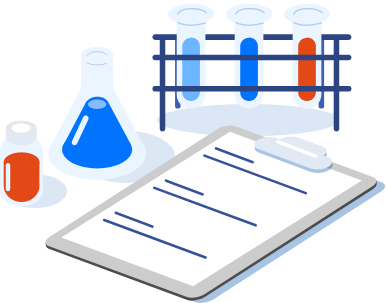
Webinar “Clinical proofs within the IVDR framework”
Webinar “Clinical proofs within the IVDR framework” Date: 10/06 12:30 to 14pm The new european […]
BMK TOOLS® was created to help everyone understand and master the different development stages of a biomarker, thus enabling various communities to draw upon a common language. This should make it possible, with time, to enrich the market with “success stories” that will benefit patients.
BMK TOOLS® is designed for all researchers and startups coming from the academic world, at national level, faced with a project for the development of a biomarker, across all therapeutic areas. This site brings together several tools whose use will depend on the state of development of the project and the previously identified needs.
BMK TOOLS® proposes guidelines on the different stages of the development of a biomarker: from discovery phase to market launch – The biomarker value chain – see below


Discovery of biomarker
The first step of the biomarker value chain is the discovery of the biomarker. During this step, the biomarker is identified, and the basic principles are described. A review of the scientific literature, patents, existing technologies, the pathologies concerned is important to fully characterise the biomarker. This includes a description of the nature, type of biomarker and its potential use in the clinic.
Assay design
At this stage, it is a matter of generating ideas, hypotheses and experimental plans for the design of the diagnostic test used to detect the candidate biomarker. During the development of a test, a comprehensive reflection on the biomarker and its test in the early stages of development allows the formulation of hypotheses and experimental plans in line with the possibilities for use in common practice.
Development of test
At this stage, it is a matter of demonstrating the functionality of the diagnostic test and to provide experimental proof that this test makes it possible to detect the biomarker candidate from simple samples, in laboratory conditions.
Proof of concept
The proof of concept stage is a critical step to ensure the next steps of the proper development of a diagnostic test. The objective of this stage is to determine whether the test is useable in practice.
Analytical validation
The analytical validation consists of the evaluation of the technical performance of the test. The objective at this stage is to demonstrate the robustness and quality of the test in terms of precision, specificity, sensitivity and reproducibility under practical conditions of use, on samples representative of the targeted population.
Clinical validation
The clinical validation stage is a very important one (in terms of time, investment) and may be broken down into several steps: clinical verification and clinical validation itself.
Regulatory, approval and launch
CE marking allows in vitro diagnostic medical devices (IVD MD) to be placed on the market in all countries of the European Union (EU). It is up to the legal manufacturer to affix the CE mark on its product once it is in full conformity with the basic requirements relating to quality, security and device performance as defined in the IVD Directive (98/79/CE).
Reimbursement
Throughout diagnostic development, testing and application, all steps of the product elaboration research and development can influence reimbursement and market access strategies. While most organizations start developing their approach to target markets once the diagnostic has obtained CE marking, proactive examination of requirements and reimbursement/market access pathways assists in having the test fit the system, which in turn speeds up reimbursement.

Webinar “Clinical proofs within the IVDR framework” Date: 10/06 12:30 to 14pm The new european […]

In three recent publications, researchers from the University of Gothenburg provide convincing evidence that an […]

The French startup Qynapse acquires True Positive Medical Devices, a canadian spin-off which has developed […]
Les cookies nécessaires sont absolument indispensables au bon fonctionnement du site. Cette catégorie comprend uniquement les cookies qui assurent les fonctionnalités de base et les fonctionnalités de sécurité du site Web. Ces cookies ne stockent aucune information personnelle.
Les cookies de préférence sont utilisés pour stocker les préférences de l’utilisateur afin de fournir un contenu personnalisé et pratique pour les utilisateurs, comme la langue du site Web ou l’emplacement du visiteur.
Les cookies analytiques sont utilisés pour comprendre comment les visiteurs interagissent avec le site Web. Ces cookies aident à fournir des informations sur les métriques du nombre de visiteurs, du taux de rebond, de la source du trafic, etc.

